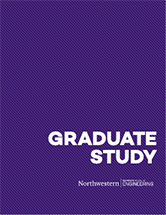From the Director's Desk: Deep Learning - Road to complete automation

Ajay Agarwal’s “Prediction machines” is a must-read for those interested in applying artificial intelligence and deep learning to real-world problems. The book discusses the role that Toronto has played in the world of deep learning and how it has evolved to a point where it can be applied to automate tasks at almost every level imaginable.
The last 50 years of computing has been mostly about converting everyday problems around us into arithmetic problems that CPUs can process faster and more accurately than human beings. Examples are all around us: Payroll systems, library indexing systems, food store checkout systems are all handled largely by computing devices of various types. While somewhat automated, they have not yet achieved a degree of full automation; humans (and often human judgment) are still required.
In the early days of artificial intelligence, the systems were primitive and followed a rules-based approach. This can be thought of as a series of “if-then” statements. If your car won’t start – then check your gas gauge. If you have enough gas – then check your battery gauge, etc. These techniques worked fine when combination of use cases were finite. A car has a limited number of reasons why it won’t start. But in a complex world, such as autonomous vehicles, rule-based systems are not adequate to the task since the use cases that replace human judgment are just enormous. Thus, the next generation of automation, which many engineers will take part in, will be driven by viewing problems not as arithmetic, but more predictive in nature. Question asked will now be – what are you trying to predict?
Every morning, many of us try to predict the traffic patterns on our route to work. Others try to predict the prices of commodities or the company sales for the upcoming quarter or the resource demand in our retail store or the emergency room. All of these are great examples of prediction models that could benefit from deep learning techniques. Deep learning can afford these systems the ability to adapt as more data is collected be coded to mirror human judgment based on a series of “training” procedures based on human judgment. These systems, if designed properly, can learn from prior decisions and update its neural network thereby becoming smarter.
The tool that was described by Dr. Agrawal was the Deep learning canvas. This is a tool for working within organizations that helps determine how to structure certain automation opportunities as deep learning applications. A simple example might be my granddaughter’s grammar school. I noticed that security on weekends is almost non-existent, which is when the basketball games often happen. Imagine a camera and a procedure that could be fully implemented, requiring the person trying to enter the school to stand at a certain distance, remove their hat, and open up their outer coats and take their hands out of their pockets. The system here is trying to automate the determination of whether this person is a friend or foe (IFF). A bulge in a coat pocket, a clenched fist, an oversized trenchcoat could all be signs of a possible foe. The facial recognition aspect can match the face to hundreds of known or suspect criminals in a variety of databases. Compared to our current system of “neglect” which often occurs in budget-constrained scenarios, this solution would require no human intervention until a “foe” is encountered. Thus all the doors could be monitored and remotely controlled by a single individual who isn’t even onsite.
While this new world of automation may not be to everyone’s liking, the marketplace will be the ultimate arbiter of what gets deployed and what doesn’t. We will have to balance basic rights, privacy, personal safety and cost-effectiveness in ways never dreamed of in the past. The realm of the engineer and engineering manager, in particular, is to re-frame the problems of the past into “prediction” frames. An example might be: Can I predict your next Amazon purchase? If so, why should I wait for you to order it and why not just send it to you on speculation? With a free return policy, we can start to achieve anticipatory selling. This is the ultimate in friction reduction as one-click ordering becomes no-click ordering.
My question to all those who have studied analytics or just have an interest in deep learning, what role will you play in changing our world? While the tools are powerful, the art will be in adapting the tools to the needs of society and will focus mostly on translating technical capabilities to real-world problems.

